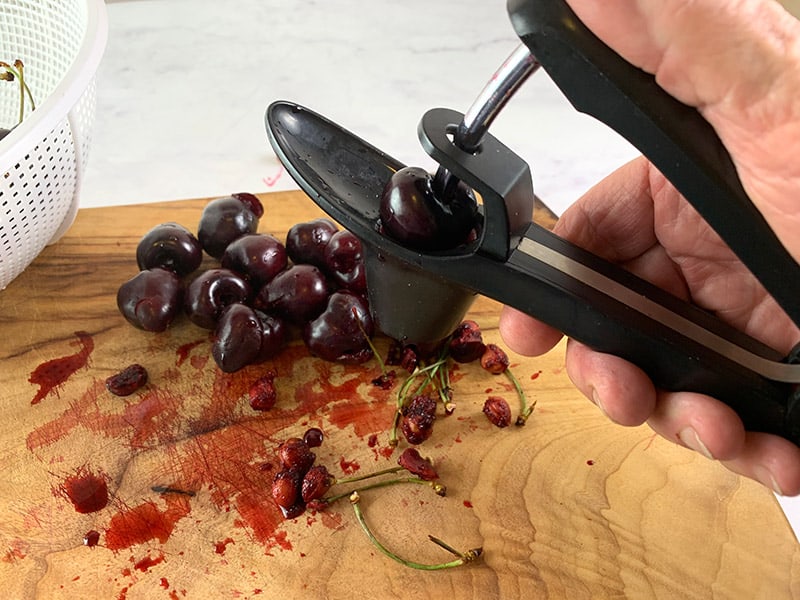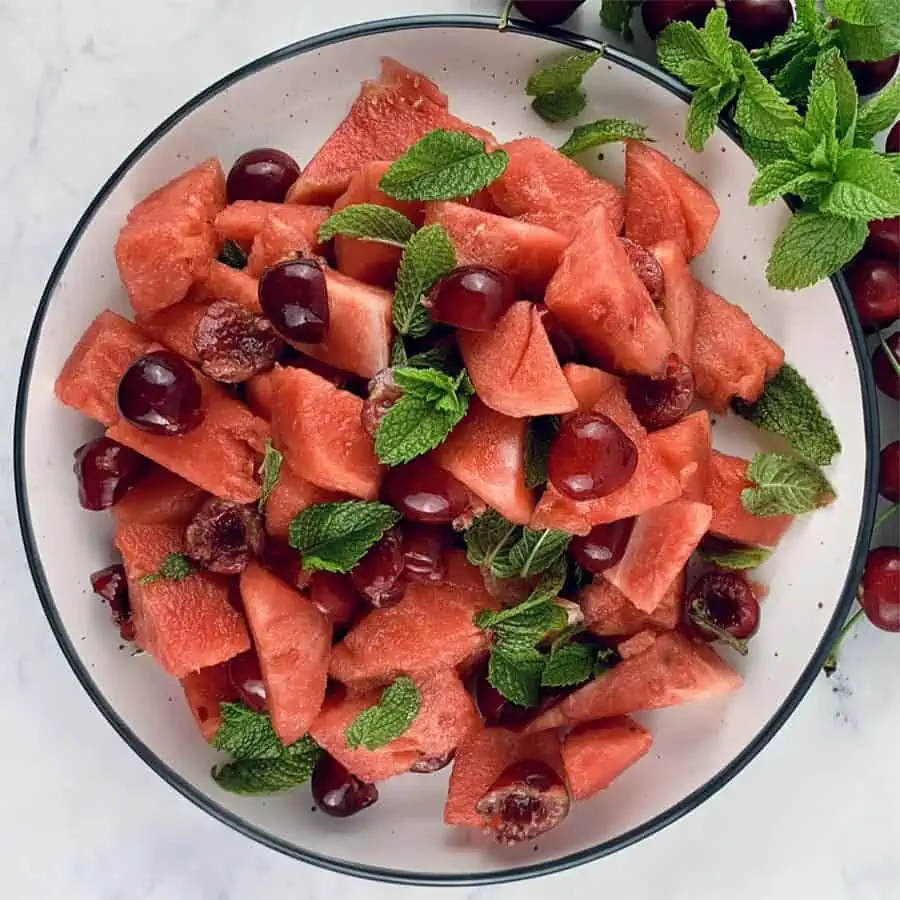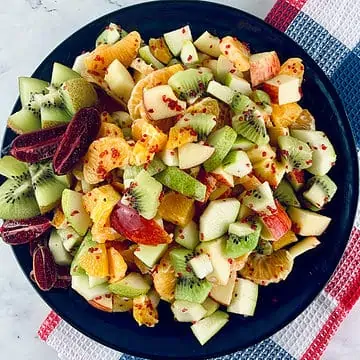Today, I'm super excited to show you how to expertly pit and slice those yummy stone fruits. You know, the ones with the juicy flesh and that tough little pit in the middle – think peaches, plums, cherries, and apricots.
Once you nail down these techniques, your salads will not only look stunning but also be a breeze to munch on. Ready to dive in and become a stone-fruit pro? Let's do this!

What Are Stone Fruits?
No fruits epitomise summer better than stone fruits, so-called because the seed inside them is very large and hard. The ripe fruit is soft, has a sweet aroma and some say a slight almond flavour. They are best when left to ripen at room temperature and then stored in the fridge. They’re packed with fibre and nutrients like potassium, beta-carotene, vitamin C and vitamin K.
Stone fruits are at their peak in summer, and you will find apricots, cherries, nectarines, peaches, and a large variety of plums.
How to Pit and Slice Stone Fruits
How to Cut Nectarines and Peaches
Starting at the fruit's stem end, cut through to the pit, then run the knife around the fruit (following the indentation) with the blade against the pit and finish where you started.

Holding both “halves” of the fruit twist in opposite directions.

Twist until both the halves separate and pull apart.

Using a small sharp knife prise the pit from the fruit, for some stubborn pits, you may need to cut around the pit to dislodge it.
For extremely stubborn pits just slice around the pit in sections until you are able to wiggle the pit free.

Place each half face down on your cutting board and cut it into thin, or thick slices or you could dice it or cut it in chunks it will depend on your recipe.

How to Pit and Cut Apricots and Plums
Apricots are and Plums much easier, all you have to do is cut around the pit (as above) then gently pull apart and remove the pit.

Place each half face down on your cutting board and cut into thin, or thick slices or dice according to your recipe.

How to Pit Cherries
For cherries, I like to use a cherry pitter, but you can also cut the cherry, prise it apart and remove the pit or use chopsticks by pushing the narrow end of a chopstick into the stem hole and then push the pit from the cherry.

Understanding Seasonality
The key to enjoying stone fruits at their best lies in understanding when they are at their peak. Different varieties are at their freshest at different times.
- Cherries typically grace the markets in late spring to early summer.
- Plums have a diverse range of varieties, each with its own season, but generally, they are available from late spring to early autumn/fall.
- Peaches hit their prime in the height of summer, typically from late spring to early autumn/fall.
- Nectarines, like peaches, thrive during the summer.
Choosing the Perfect Stone Fruit
Selecting ripe and flavourful stone fruits is easy when you know how our best tips are:
- Colour and Texture: Look for vibrant, rich colours and a slight give when gently pressed. Avoid fruits that are too firm or have bruises, as these may be overripe or damaged.
- Fragrance: A sweet, fruity aroma at the stem end indicates ripeness. If a stone fruit lacks fragrance, it may not be fully mature.
- Weight: Heavier fruits are often juicier and more flavourful. Hold the fruit in your hand – it should feel substantial for its size.
- Uniformity: Choose fruits that are uniformly shaped without any significant blemishes. Irregularities may suggest uneven ripening or damage.

Storing Stone Fruits
You can prolong the freshness of your stone fruits if you store them correctly.
- Refrigeration: Store ripe stone fruits in the refrigerator to slow down the ripening process. However, bring them to room temperature before serving to enhance their flavour.
- Avoid Crowding: Store stone fruits in a single layer to prevent bruising and encourage air circulation. Examine them regularly and remove any overripe or damaged fruits.
- Freezing: Stone fruits can be sliced and frozen for later use in smoothies, desserts, or as a refreshing snack. Place slices on a baking sheet until frozen, then transfer to a freezer bag for easy portioning.













Leave a Reply